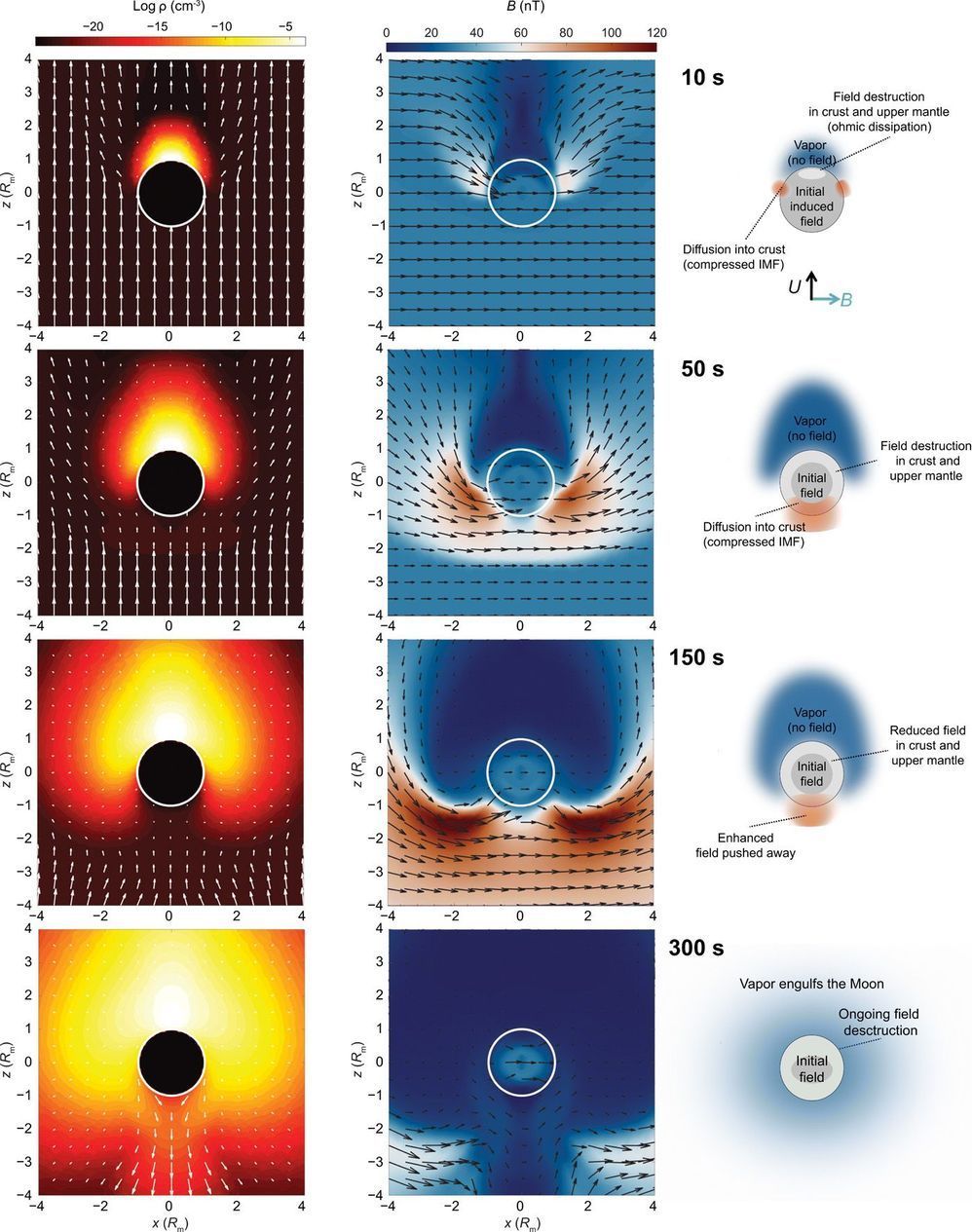The crusts of the Moon, Mercury, and many meteorite parent bodies are magnetized. Although the magnetizing field is commonly attributed to that of an ancient core dynamo, a longstanding hypothesized alternative is amplification of the interplanetary magnetic field and induced crustal field by plasmas generated by meteoroid impacts. Here, we use magnetohydrodynamic and impact simulations and analytic relationships to demonstrate that although impact plasmas can transiently enhance the field inside the Moon, the resulting fields are at least three orders of magnitude too weak to explain lunar crustal magnetic anomalies. This leaves a core dynamo as the only plausible source of most magnetization on the Moon.
The Moon presently lacks a core dynamo magnetic field. However, it has been known since the Apollo era that the lunar crust contains remanent magnetization, with localized surface fields reaching up to hundreds of nanoteslas or higher and spanning up to hundreds of kilometers (1). Magnetic studies of Apollo samples and the lunar crust indicate that the magnetizing field likely reached tens of microteslas before 3.56 billion years (Ga) ago (1, 2). The origin of the strongest lunar crustal anomalies and the source of the field that magnetized them have been longstanding mysteries.
Although magnetic fields in rocky bodies are commonly explained by convective dynamos in their metallic cores, a convective dynamo on the Moon may not have had sufficient energy to produce the strongest implied surface paleofields (3, 4). This may imply that a fundamentally different nonconvective dynamo mechanism operated in the Moon or that a process other than a core dynamo produced such magnetization.
